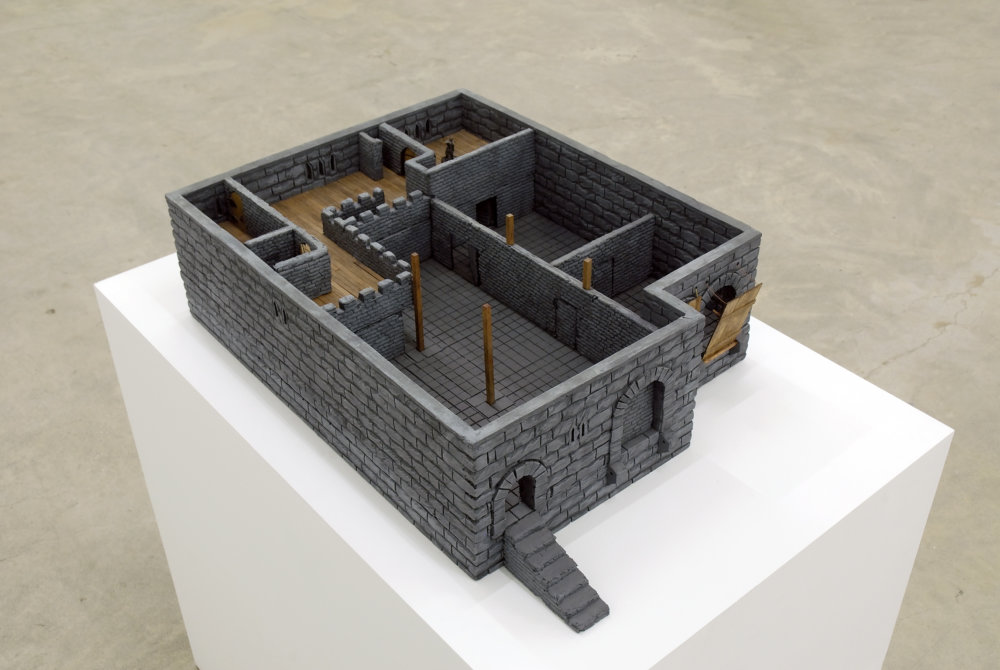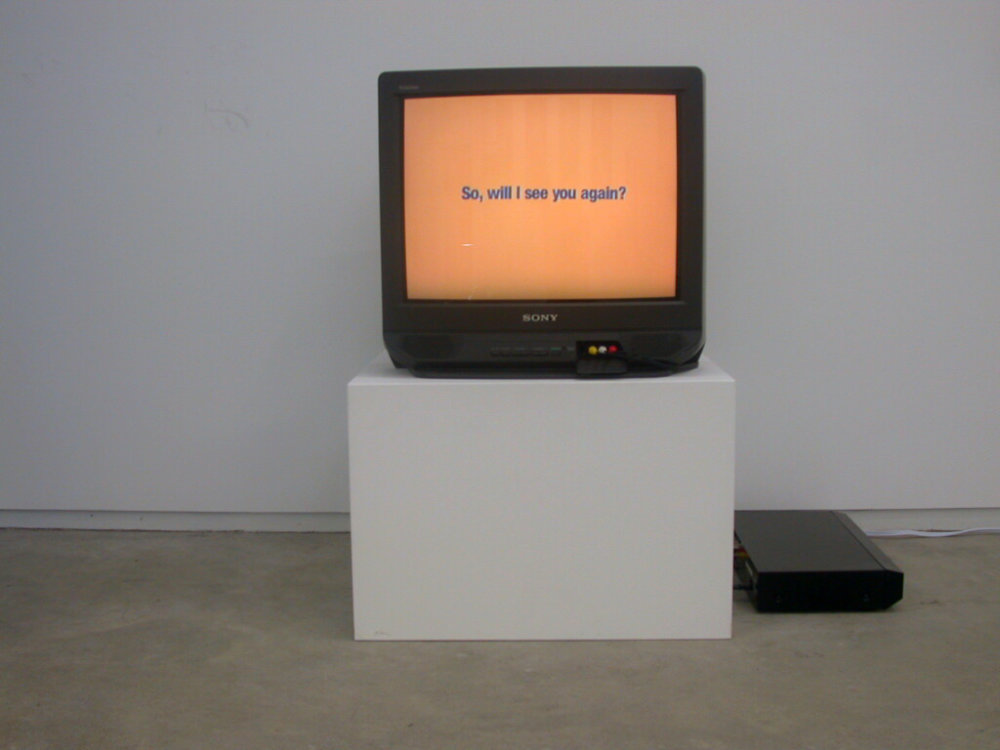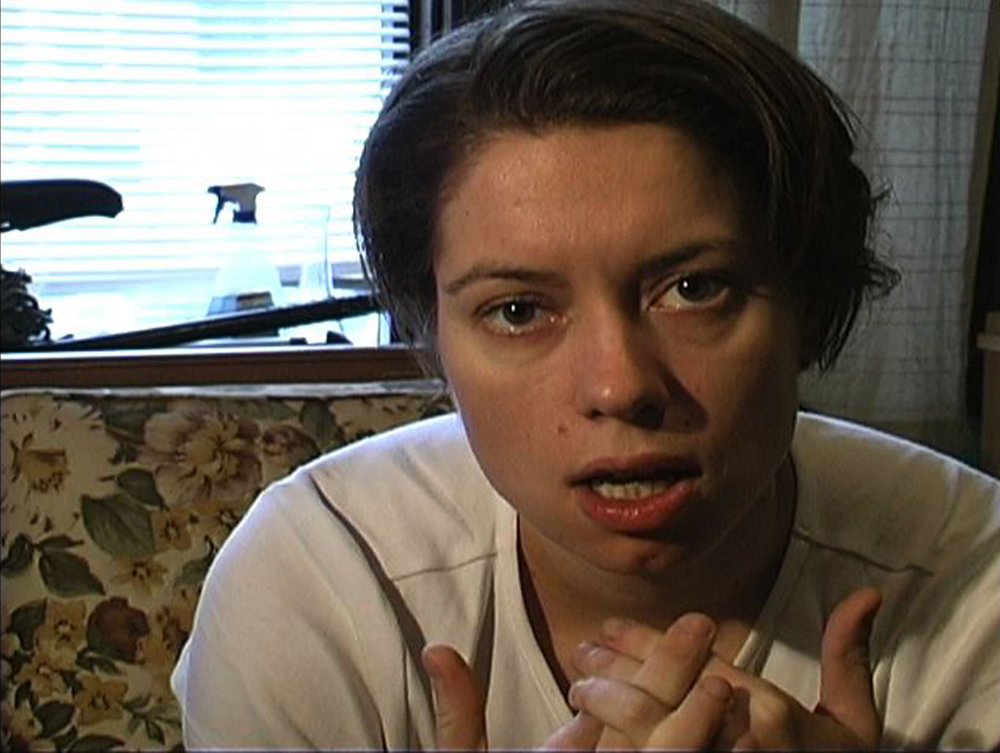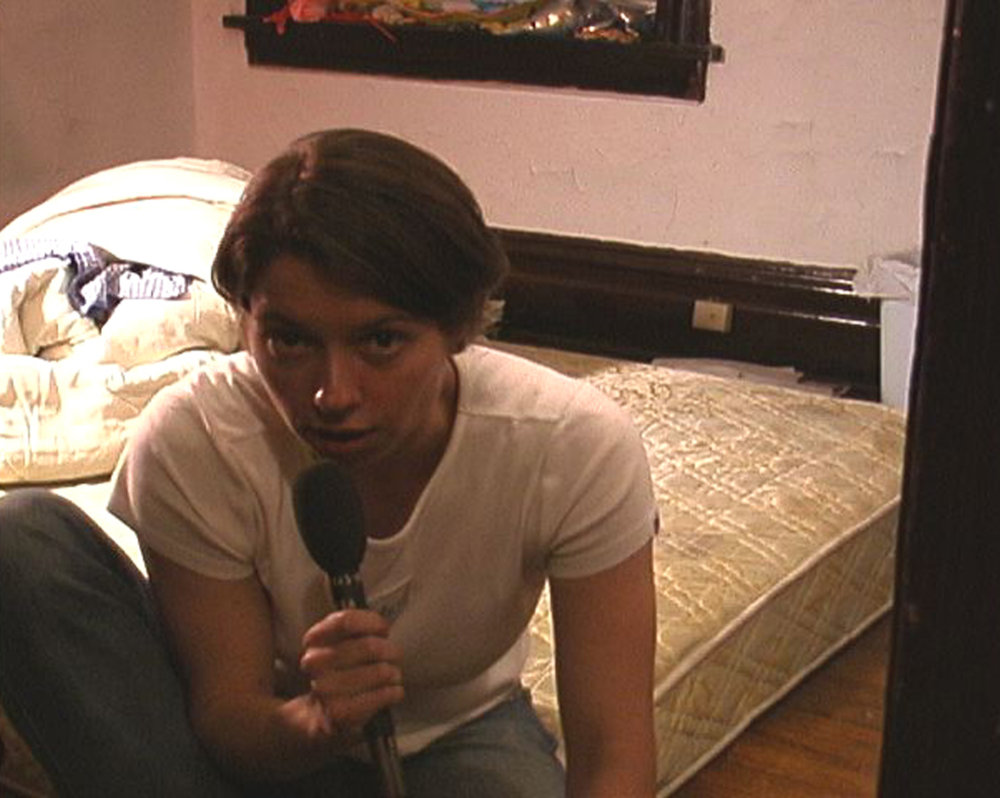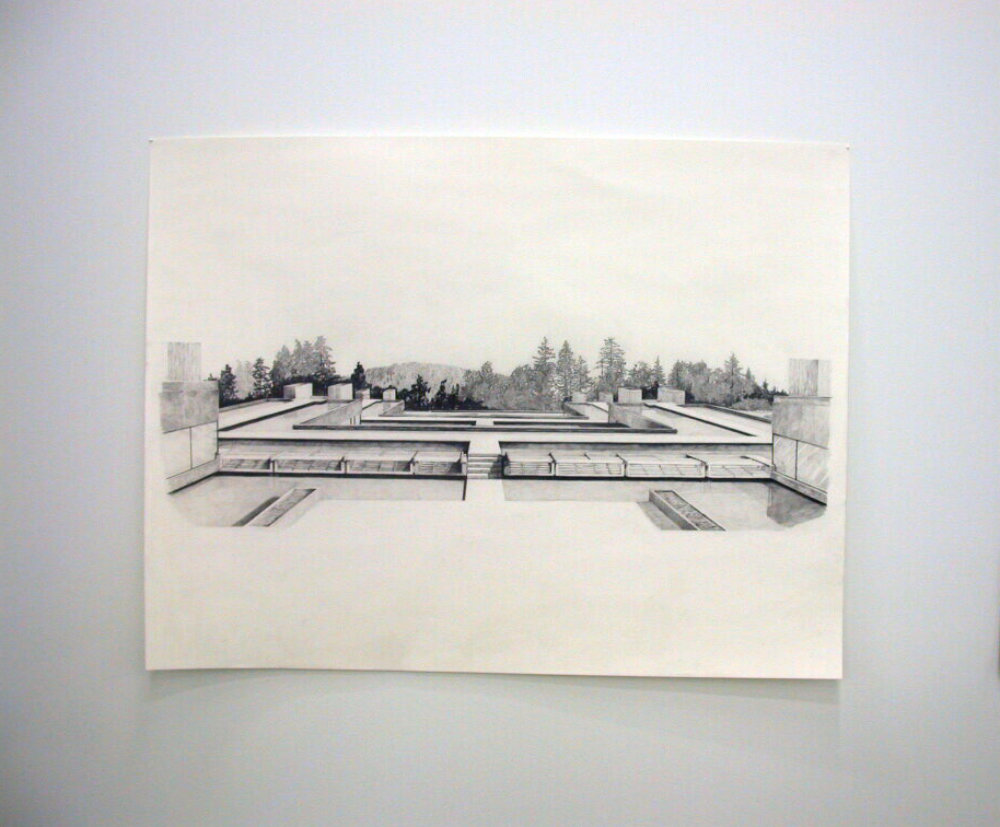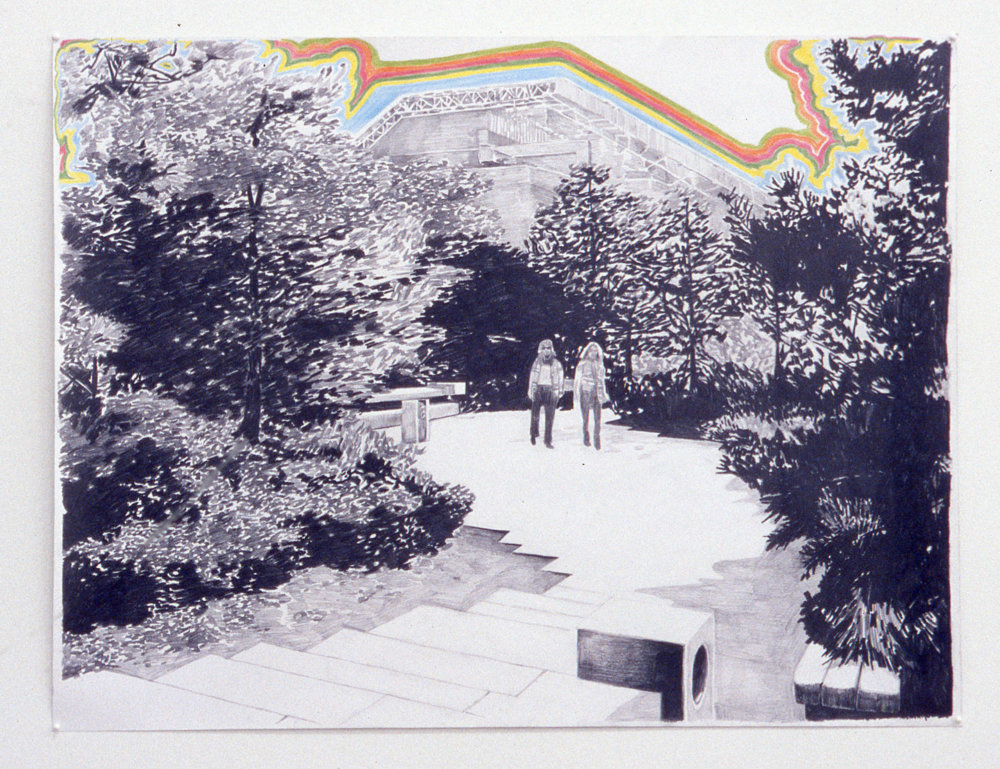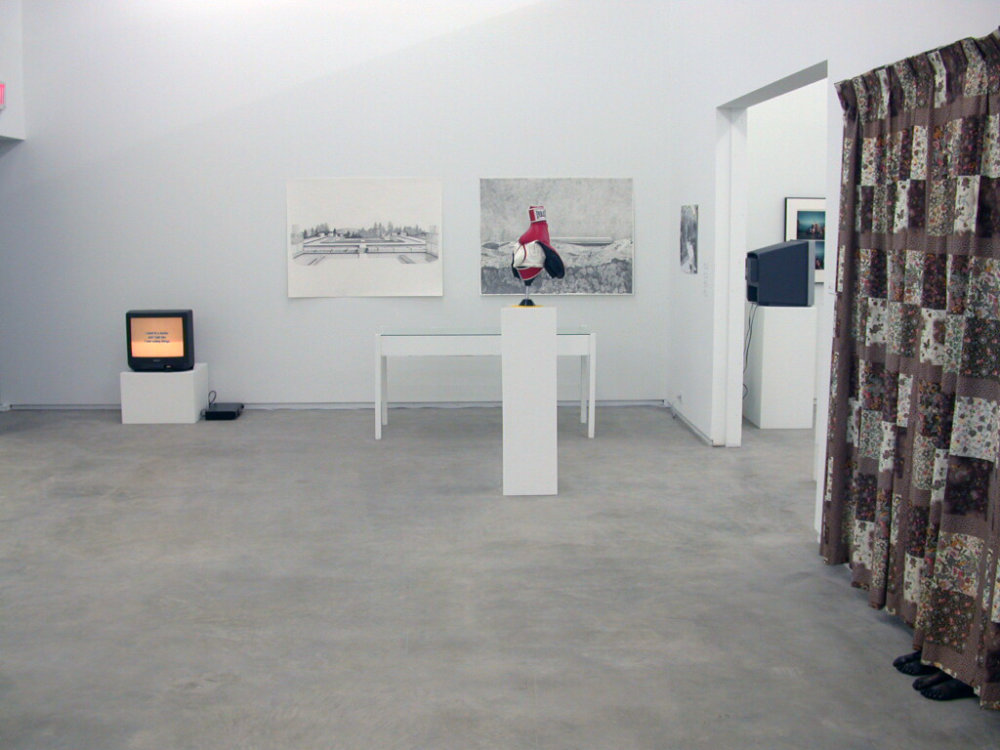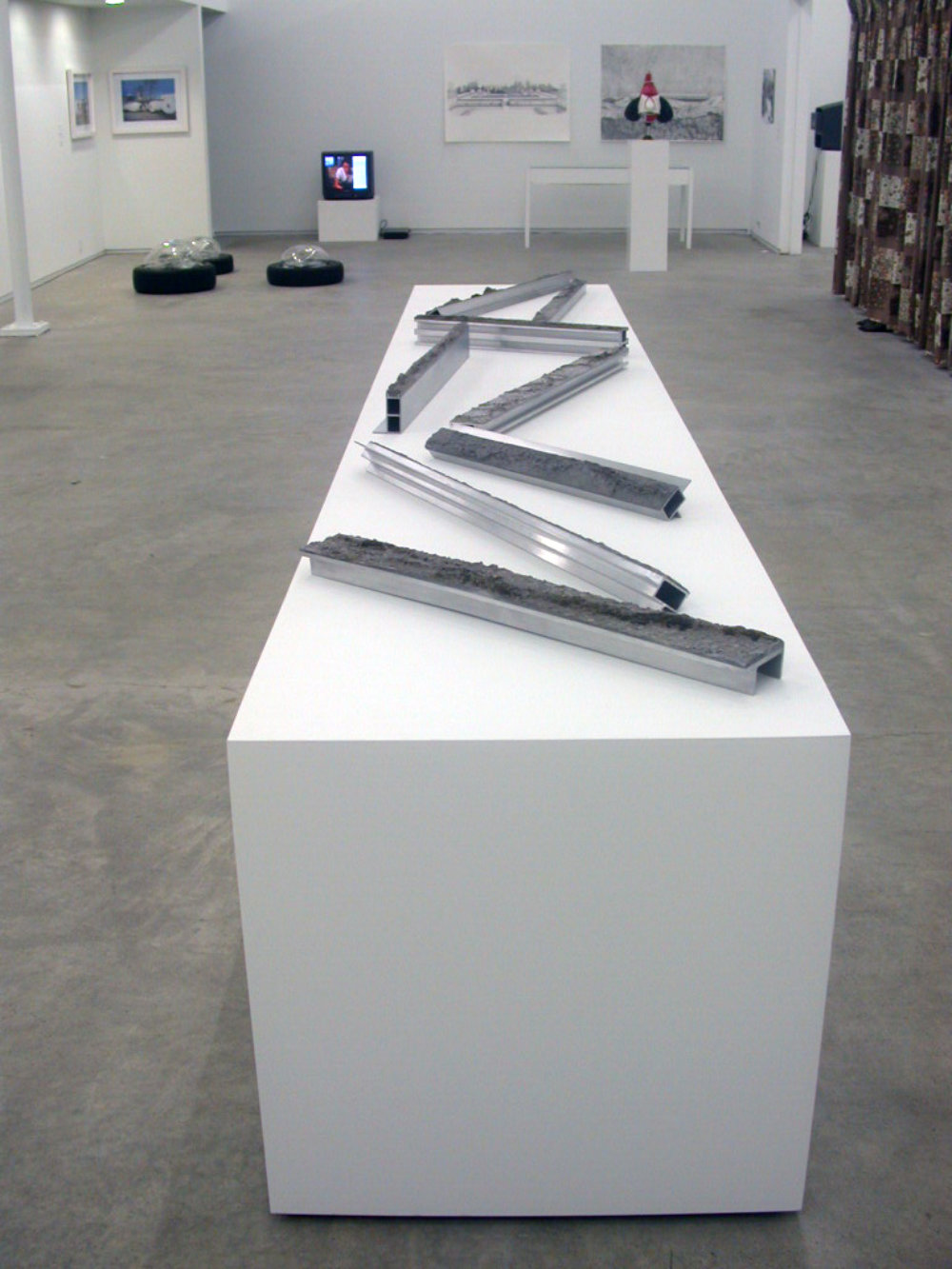Christos Dikeakos, Geoffrey Farmer, Arni Haraldsson, Brian Jungen, Roy Kiyooka, Germaine Koh, Myfanwy MacLeod, Damian Moppett, Isabelle Pauwels, Jerry Pethick, Judy Radul, Kevin Schmidt, Ron Terada, Ian Wallace, Jin-me Yoon
274 East 1st
June 3–July 8, 2006
274 East 1st is a major exhibition of new work by gallery artists that inaugurates the gallery’s move to the central Main Street/Terminal Avenue area of Vancouver, at 274 East 1st Avenue.
The newly renovated 6500 square-foot industrial warehouse space, designed by architect/artist Robert Kleyn, marks a new situation from which the project of the gallery will proceed. This opening group exhibition initiates the practical and aesthetic reconfiguration of the space and declares a groundnote from which future installations, interventions and curatorial collaborations can develop. The forthcoming practice at Catriona Jeffries will offer both a civic counterpoint and keen commitment to artists' representation internationally.
Kevin Schmidt spins an architectural model of the new space into a tabletop role-playing game à la Dungeons and Dragons, almost a stone’s throw away from a silver polyhedral die named Science World. In another new work, Schmidt observes and records the synthetic allure of a custom fake, or cover version, which he created in order to track its collectible value on eBay. Six new photographs by Geoffrey Farmer, realized out of A Pale Fire Freedom Machine (2005), depict graceful assemblages of outmoded, mass-produced wooden furniture. A brand new video work by Farmer will also be on view. Four new canvases by Ian Wallace depict the studio as a sphere of conversation, contemplation and production. Brian Jungen will present a new sculptural work that takes on pugilism in reconfigured punching bags. Damian Moppett will show two pottery bearing, biomorphic plaster sculptures and a sequence of his most recent drawings.
Germaine Koh’s series of objects were made during her recent residency in Switzerland. Uniting traces of the local metal factory and rugged topography of the Alpine region near Sierre, various lengths of extruded aluminum are fused with metallized casts of individual cracks in the road pavement that resemble mountain ranges, milled cleanly on the sides like geological samples. In a buoyant installation work by Jerry Pethick, geometrically grooved treads and polished hubcaps meet ballooning glass-blown bubbles. Melding spectrafoil cutouts and black silicone shadows, this work also relates directly to Pethick’s gigantic TIME TOP, a bronze time/space vehicle that is currently submerged, encrusted with two years worth of sea life, and due to be recovered with the May tides before being installed on the shoreline of False Creek. A new photographic work by Christos Dikeakos indexes the neighbourhood of Main and Terminal, accompanied by a broadsheet that details various histories of the area. Judy Radul will show several companion works to her major 5-screen projection installation, Downes Point. In an idyllic Hornby Island setting, the principal actor from Downes Point gives a speech that Gordon Craig, the English producer, scene designer, and actor, wrote as an imaginary address to the Moscow Art Theatre cast of Hamlet, following Craig’s historic co-production of the play with Stanislavsky in 1909. Revealing certain natural scenery in another Hornby location, Roy Kiyooka’s photo sequence, Hornby Island Bathers (1978) will be on view, together with a synonymous video work. Arni Haraldsson will show a single new photographic work that considers architectural history and the contemporary post-modern site. Jin-me Yoon investigates the intersections of body, cultural mediation and space in a new work produced during her residency in Korea.
Through graphite drawings, photographs and an archival project, Alex Morrison critiques the bureaucratic shepherding of a nostalgic re-enactment of hippie culture into ceremonies marking the fortieth anniversary of Vancouver’s once-radical Simon Fraser University, and takes SFU’s iconic status as a 1960s architectural landmark by Arthur Erickson as stand-in for the institutional conquest of counter-cultural style. Amidst the supposed grand exorcism that is renovation, Myfanwy MacLeod’s child-sized Ghost unsettles any notion of space as inert or neutral. Trailing clouds of a decomposing domestic, MacLeod’s floral, quilt-patterned curtain invests an example of kitsch vernacular with a disquieting capacity to conceal. In contrast, Ron Terada’s sign sculpture, You Have Left The American Sector, provides a frank abnegation of U.S. domestic manifest destiny. Two new Terada photographs proffer deadpan declarations to the renovated expanse. New Models! Open Concept Plans!
In addition, Catriona Jeffries is very pleased to announce her representation of Isabelle Pauwels, who will show her new video work, Eddie. Completing her MFA at the School of the Art Institute of Chicago, Pauwels is a prominent member of a younger generation of Vancouver artists coming to international attention. In past works, Pauwels jolts various social relationships against the measured formal structures of images, performance, video and architecture.



